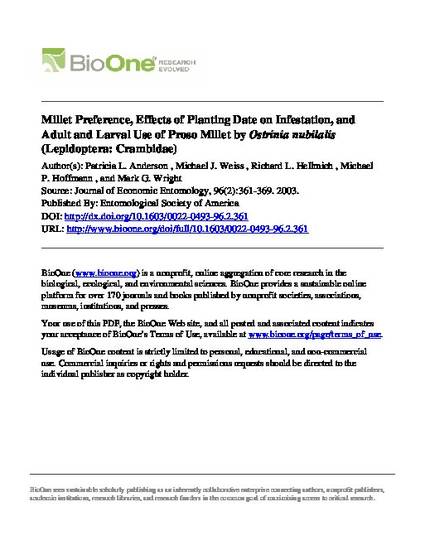
The interaction between millet and European corn borer, Ostrinia nubilalis (Hu¨ bner), was investigated to gain insight into whether millet could serve as a refuge or trap crop for O. nubilalis management. In 1995, 1996, and 1999, millet selection studies were conducted in North Dakota and New York with four millet species. Proso millet, Panicum milliaceum L., had the highest infestation and widest distribution of O. nubilalis developmental stages, indicating the presence of both univoltine and bivoltine ecotypes. Siberian foxtail millet, Setaria italica (L.) Beauvois, harbored the greatest number of adults, followed by German foxtail millet, Setaria italica (L.) Beauvois. These two millets appeared to serve as better aggregation sites than proso millet. In North Dakota in 1997, proso millet planting date studies showed later planting dates were more heavily infested than earlier dates; in 1998, thistrend wasrevers ed. The change in trendsbetween yearswasprobably a result of differencesin the respective growing seasons and subsequent differences in O. nubilalis ßights. Adult sampling showed that both old and young females aggregated in proso millet during the day; however, at night, it appeared that young femalesmoved out of millet to oviposit, whereasold femalesremained in millet. Egg masses were detected in proso millet over a 7-d period in 1997 and a 4-d period in 1998. Larval sampling showed planting proso millet between late May and mid-June may maximize the presence of individualsfrom both O. nubilalis ecotypes. Once the optimal combination of planting date, plant density, and millet type is found, millet may serve as an effective refuge or trap crop for O. nubilalis management.
Available at: http://works.bepress.com/richard_hellmich/16/

This article is from Journal of Economic Entomology; 96 (2003); 361-369; doi: 10.1603/0022-0493-96.2.361